Lenovo's VR HMD, Such As It Is
We fully expect to see a smattering of VR HMDs from PC makers at CES, and the first one we got a look at is a yet-unnamed model from Lenovo. It’s just a non-functional prototype for now, with a working title of “Lenovo VR Headset.” However, in our conversation with Lenovo about the HMD, it’s clear that the company is not merely taking a set of recommended specs from Intel and Microsoft. It’s working through a variety of ideas, issues, and costs to develop the headset that it thinks will be ideal, within the bounds of the specifications that Intel and Microsoft have outlined.
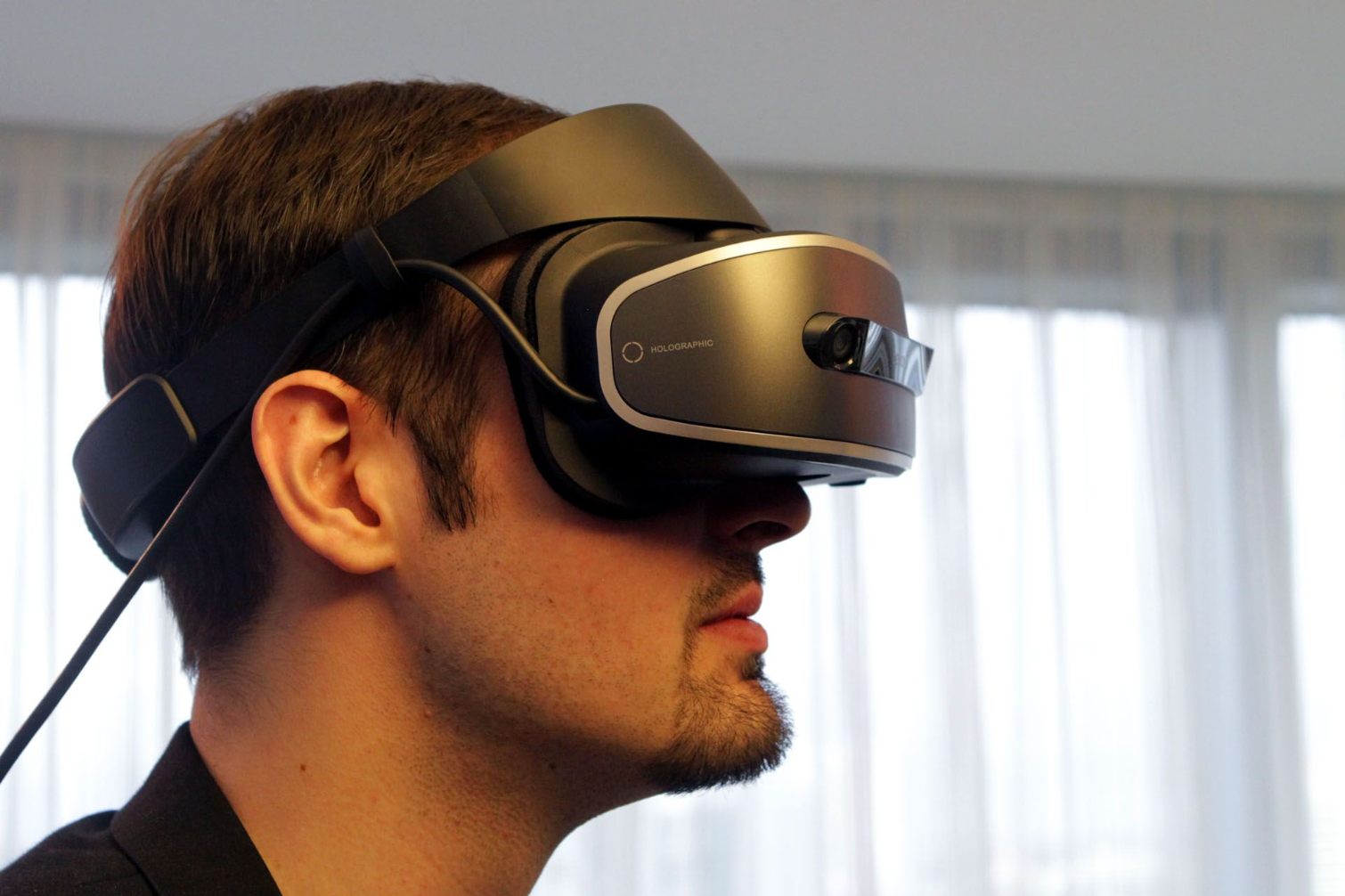
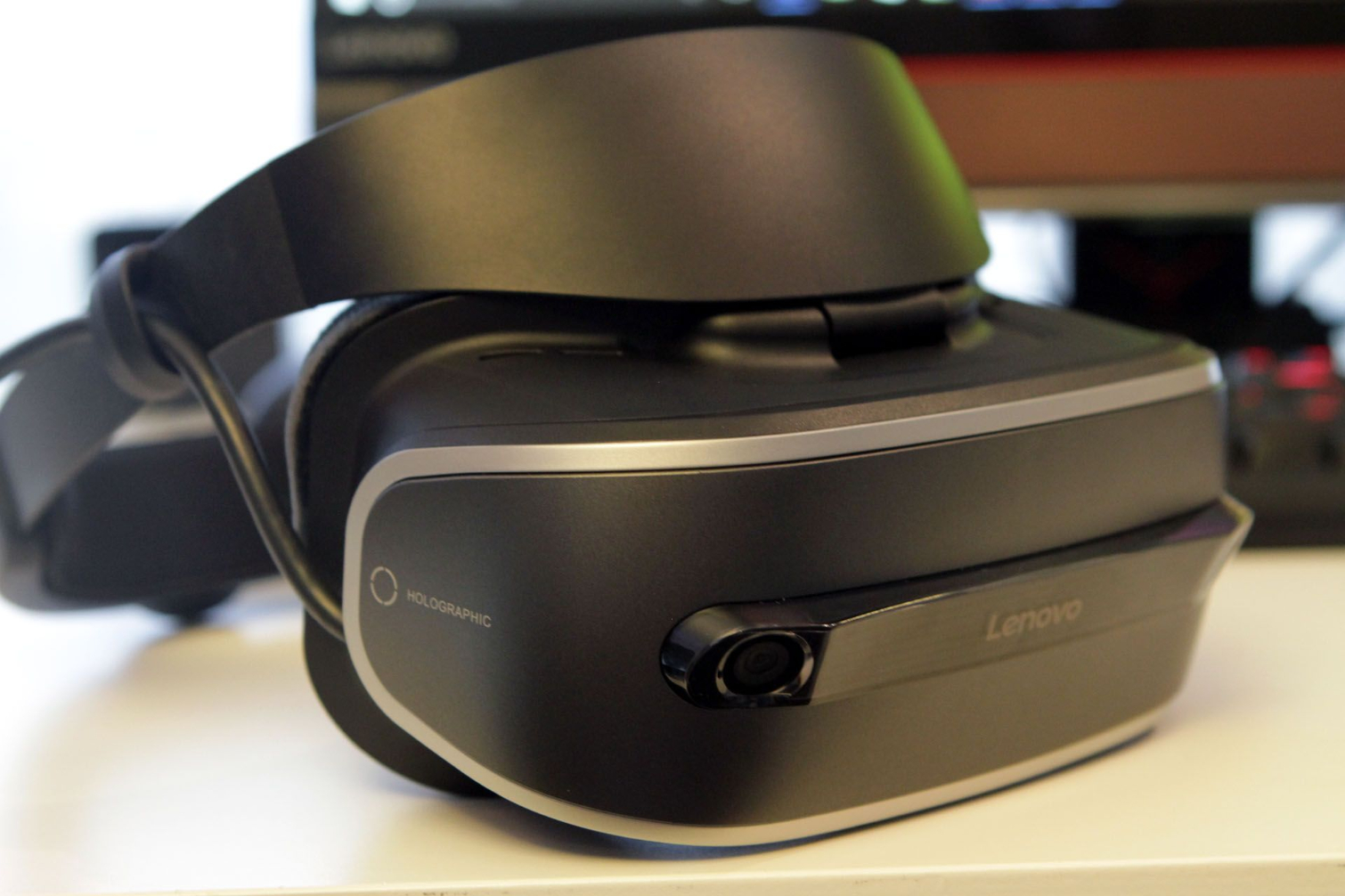
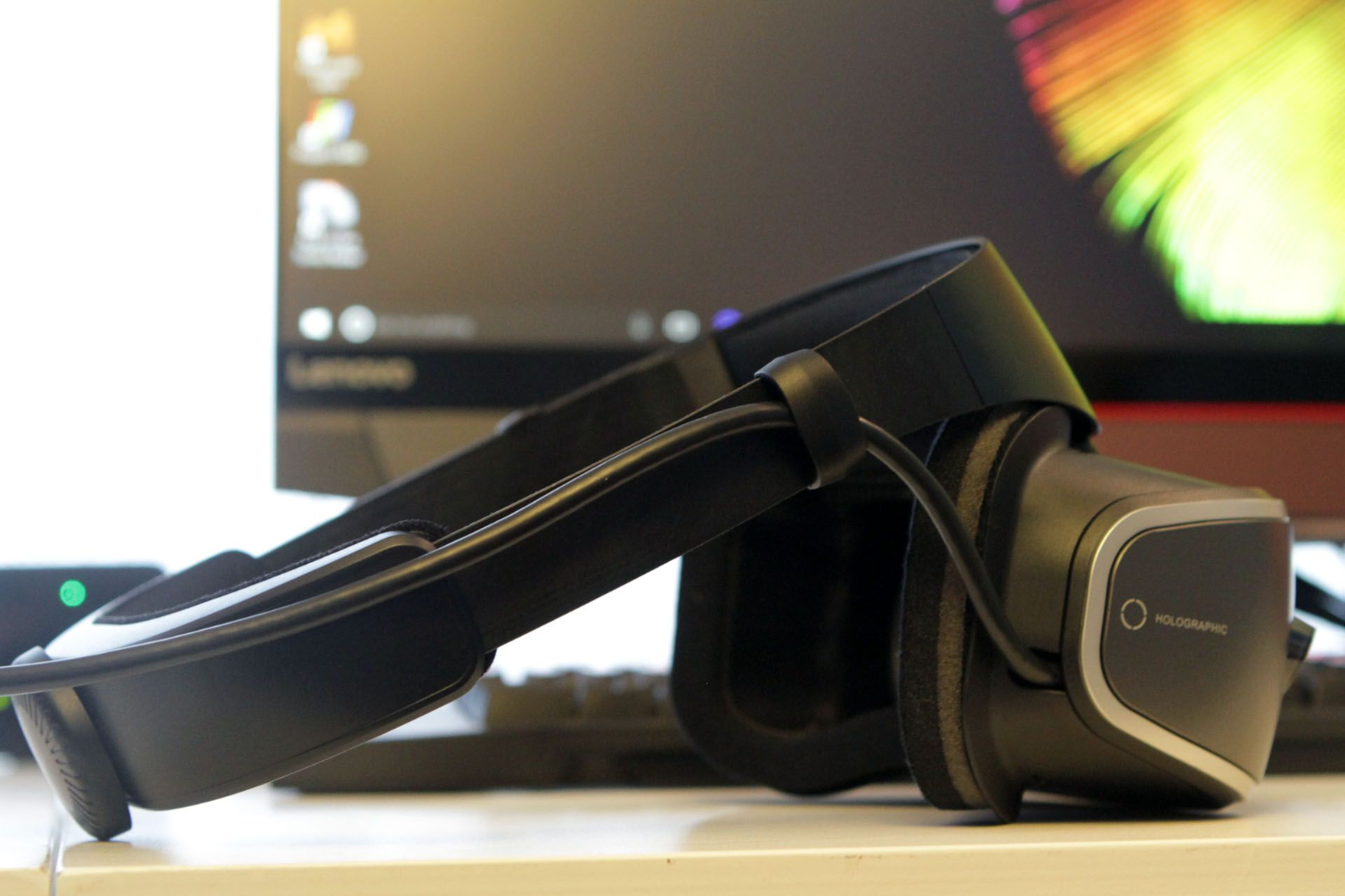
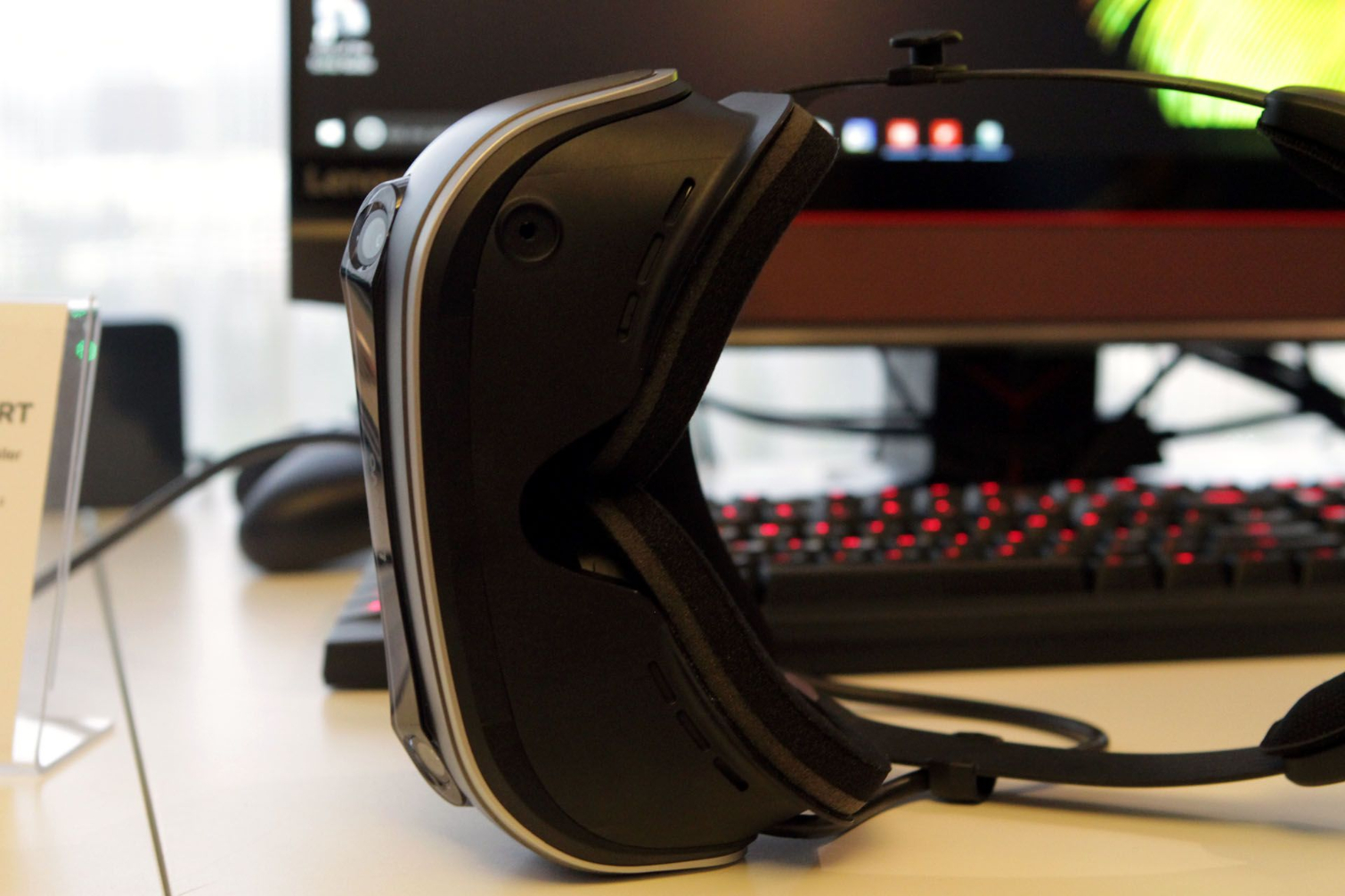
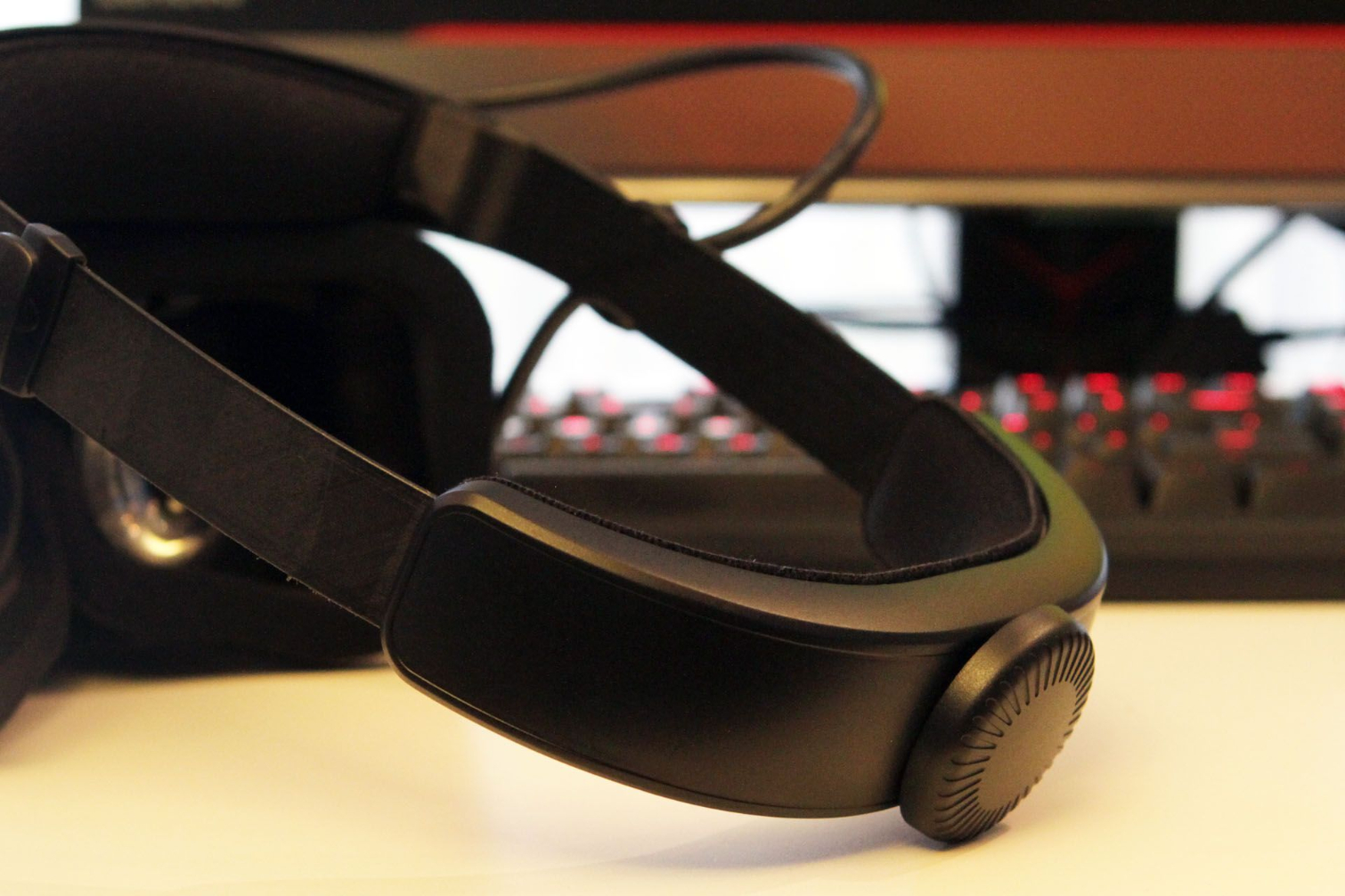


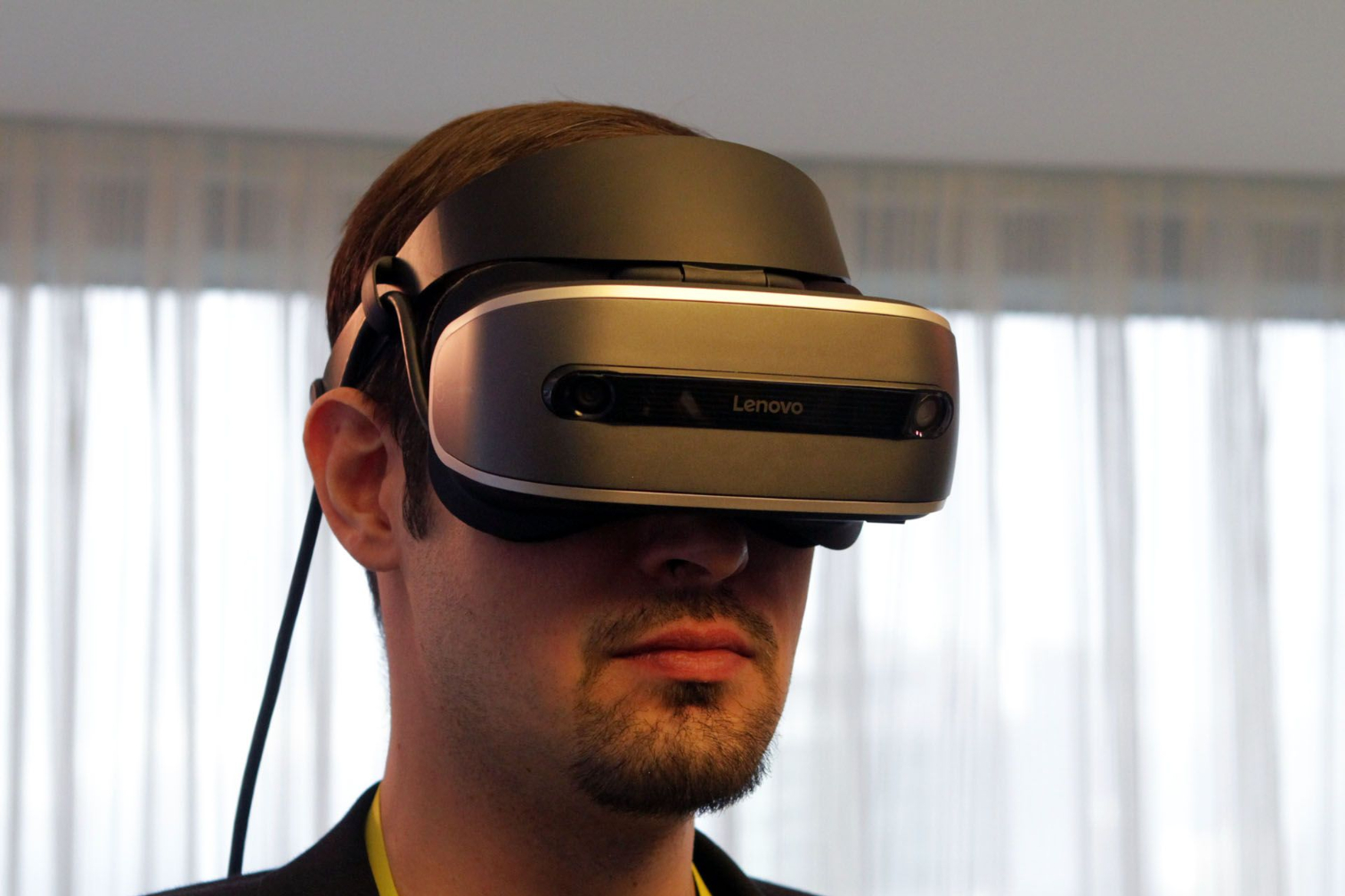
The Design
Lenovo’s HMD feels remarkably lightweight (it's about 350g) and comfortable, and it accommodated my glasses as well or better than any HMD I’ve worn. It has a headband that’s similar to Microsoft’s HoloLens, with a dial at the back that loosens or tightens for an ideal fit. The entire front assembly actually flips up, so you can pause what you’re doing and look down without having to take the entire thing off your head.
It seems that Lenovo is working hard on the industrial and ergonomic design of the device, and so far, the company is doing a fine job on that front.
What We Know
The specs list for the HMD is woefully incomplete, but that’s because Lenovo has not yet determined what they will be. We do know, though, that it offers 1440 x 1440 resolution per eye with an OLED display. That puts it towards the top end of the range of specifications for the new HMDs in that regard.
The interface requires a two-cable solution: there’s a standard USB connector and an HMDI connector at the end of a (rather short) cable. There’s also an audio jack, which means that this HMD won’t have built-in headphones. We’re unsure if that means there will be an integrated mic array or not. (Microsoft “strongly” recommends one.)
It will come with at least an Xbox controller, although there are other options Lenovo may choose to employ. For example, a representative noted that joystick controllers will likely be a common input device with these HMDs, so it stands to reason that Lenovo may have one of those. However, it seemed as though that part of the equation was unsettled just yet, so we consider the input tool options for Lenovo’s HMD to be wide open (beyond the gamepad).
Most importantly, we know that this will be a merged reality device with inside-out tracking, because it has a two-camera assembly on the front.
Get Tom's Hardware's best news and in-depth reviews, straight to your inbox.
Finally, we know that Lenovo is shooting for a price tag of under $400, although a rep noted that they’re working to get it down to as close as possible to the $300 baseline price point that Intel and Microsoft spelled out for these HMDs.
Price is going to be a delicate balancing act, and it will be intriguing to see how OEMs sort it out. We’re told that Microsoft’s advice to OEMs is to target a package (PC plus HMD) of no more than $1,000. Doing a little math, that means a PC that goes along with this HMD should be around $600.
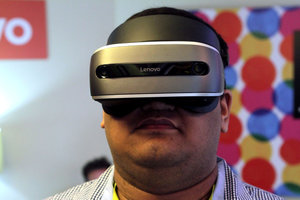

What We Don’t Know
Even given the above, there are, of course, lingering questions. We don’t know anything about the refresh rate or field of view, and there’s no word on the lens type.
Beyond acknowledging that the device has a two-camera system for merged reality and inside-out tracking, Lenovo had no further details. For example, we don’t know if there are IR sensors--all we really know is that it’s not a version of Intel’s new RealSense camera, which will be deployed on Intel’s own Project Alloy HMD.
Of course, the device will have an IMU of some kind, but Lenovo wouldn’t even cop to its existence, let alone offer any details on it. (The only way it wouldn’t have one is if Lenovo used sensor fusion, which seems less than ideal on such a pricey item.)
It’s also worth noting again that this was not a working prototype, but a mockup.
We expect to see more of these HMDs during our week at CES; whether or not any of them are working remains to be seen.
Seth Colaner previously served as News Director at Tom's Hardware. He covered technology news, focusing on keyboards, virtual reality, and wearables.
